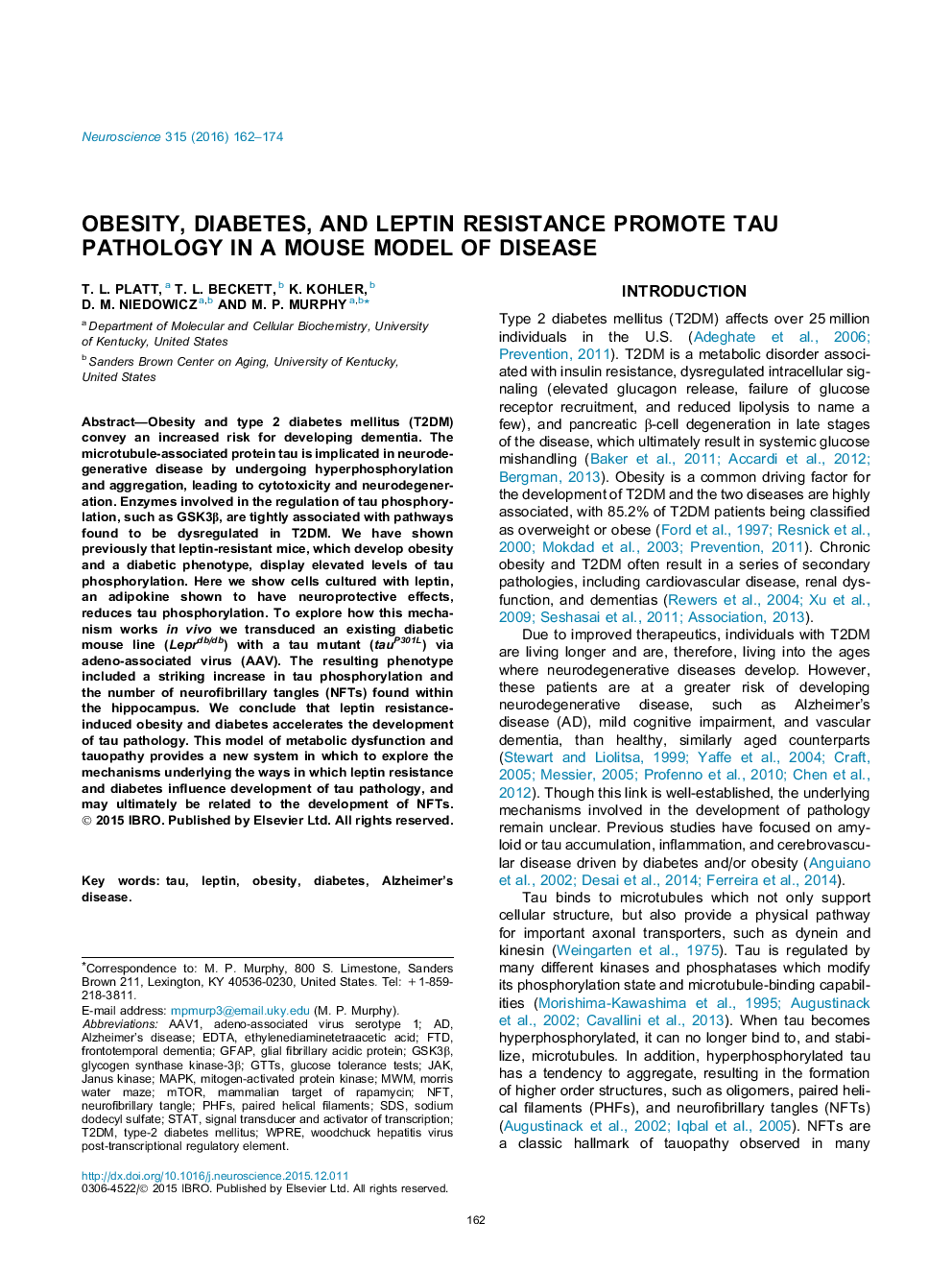| کد مقاله | کد نشریه | سال انتشار | مقاله انگلیسی | نسخه تمام متن |
|---|---|---|---|---|
| 6271732 | 1614761 | 2016 | 13 صفحه PDF | دانلود رایگان |
- Obesity, diabetes, and leptin resistance promote tau phosphorylation in vivo.
- Leptin resistance promotes tau phosphorylation in vitro.
- Obesity, diabetes, and leptin resistance enhance NFT pathology in tauP301L-expressing mice.
Obesity and type 2 diabetes mellitus (T2DM) convey an increased risk for developing dementia. The microtubule-associated protein tau is implicated in neurodegenerative disease by undergoing hyperphosphorylation and aggregation, leading to cytotoxicity and neurodegeneration. Enzymes involved in the regulation of tau phosphorylation, such as GSK3β, are tightly associated with pathways found to be dysregulated in T2DM. We have shown previously that leptin-resistant mice, which develop obesity and a diabetic phenotype, display elevated levels of tau phosphorylation. Here we show cells cultured with leptin, an adipokine shown to have neuroprotective effects, reduces tau phosphorylation. To explore how this mechanism works in vivo we transduced an existing diabetic mouse line (Leprdb/db) with a tau mutant (tauP301L) via adeno-associated virus (AAV). The resulting phenotype included a striking increase in tau phosphorylation and the number of neurofibrillary tangles (NFTs) found within the hippocampus. We conclude that leptin resistance-induced obesity and diabetes accelerates the development of tau pathology. This model of metabolic dysfunction and tauopathy provides a new system in which to explore the mechanisms underlying the ways in which leptin resistance and diabetes influence development of tau pathology, and may ultimately be related to the development of NFTs.
Journal: Neuroscience - Volume 315, 19 February 2016, Pages 162-174
